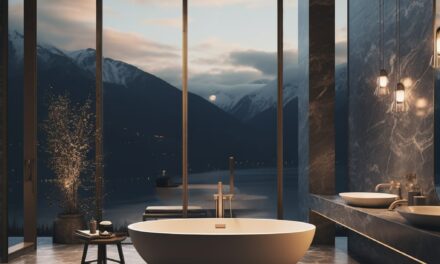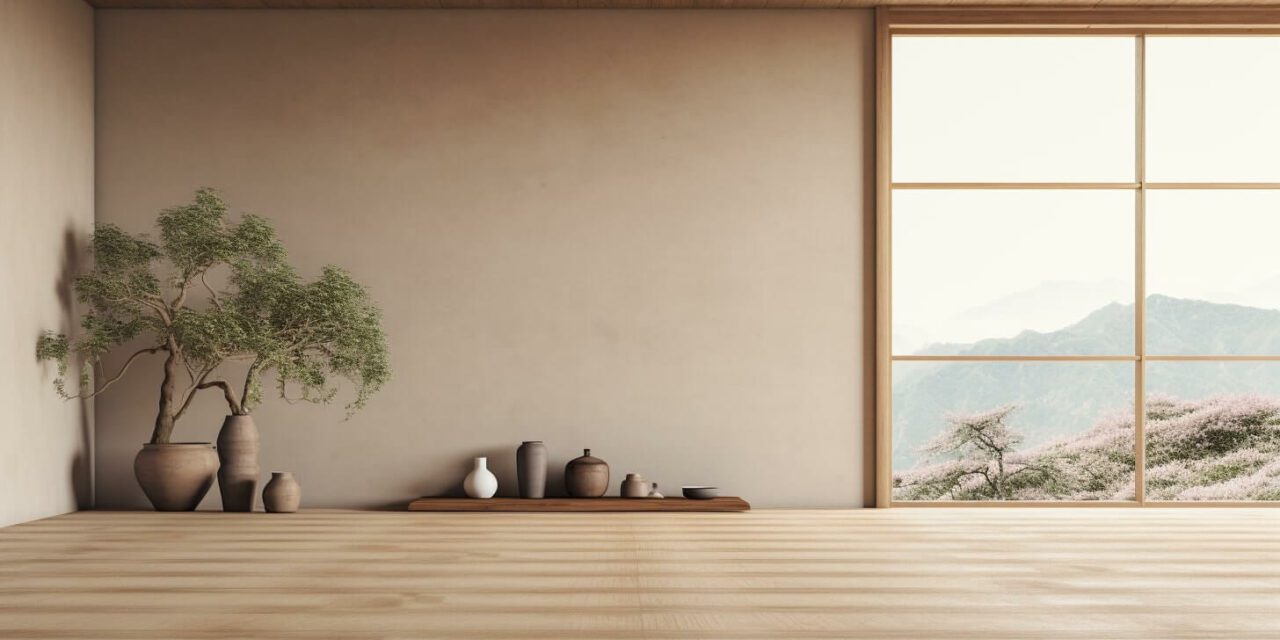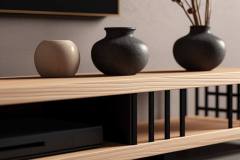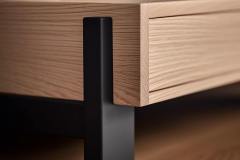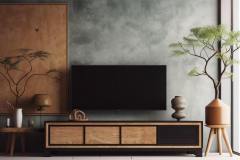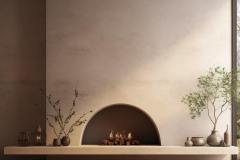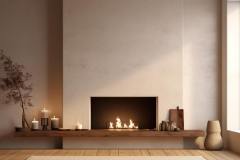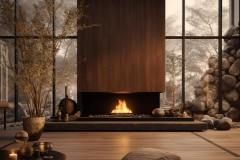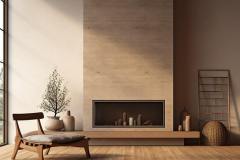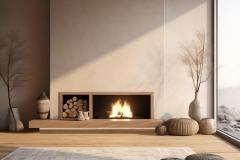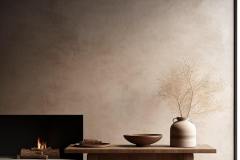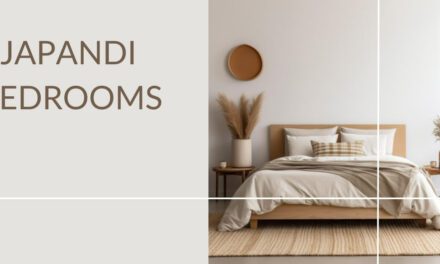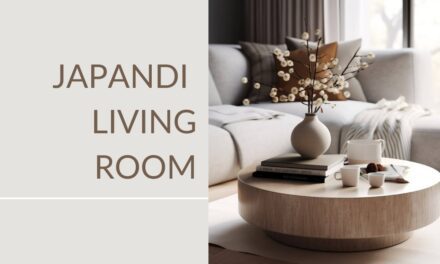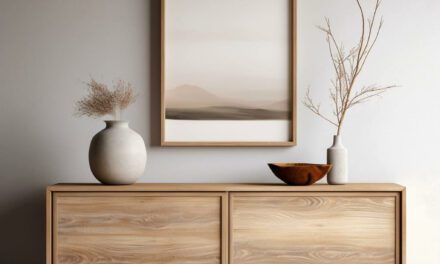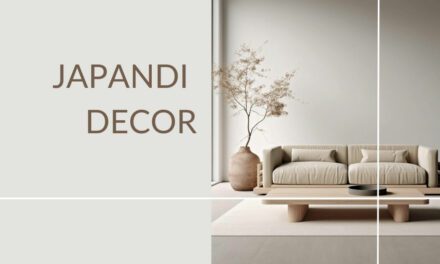What is Japandi design?
Japandi style combines aspects of Japanese minimalism with the functionality of Scandinavian design.
Here are the key features:
- Minimalist design and simplicity (clean lines, uncluttered spaces, and a pared-down aesthetic)
- Natural materials (wood, bamboo, rattan, and stone for warmth and texture)
- Muted color palette (neutral colors with muted earth tones: whites, grays, beiges, and subtle greens or blues)
- Functionality and practicality (furniture and decor that serve a purpose)
- Wabi-sabi and hygge (embracing imperfections, natural beauty, and cozy atmospheres)
- Japanese design principles (kanso, shibui, ma, and wabi-sabi)
- Scandinavian design principles (lagom, hygge, sustainability, and functional furniture)
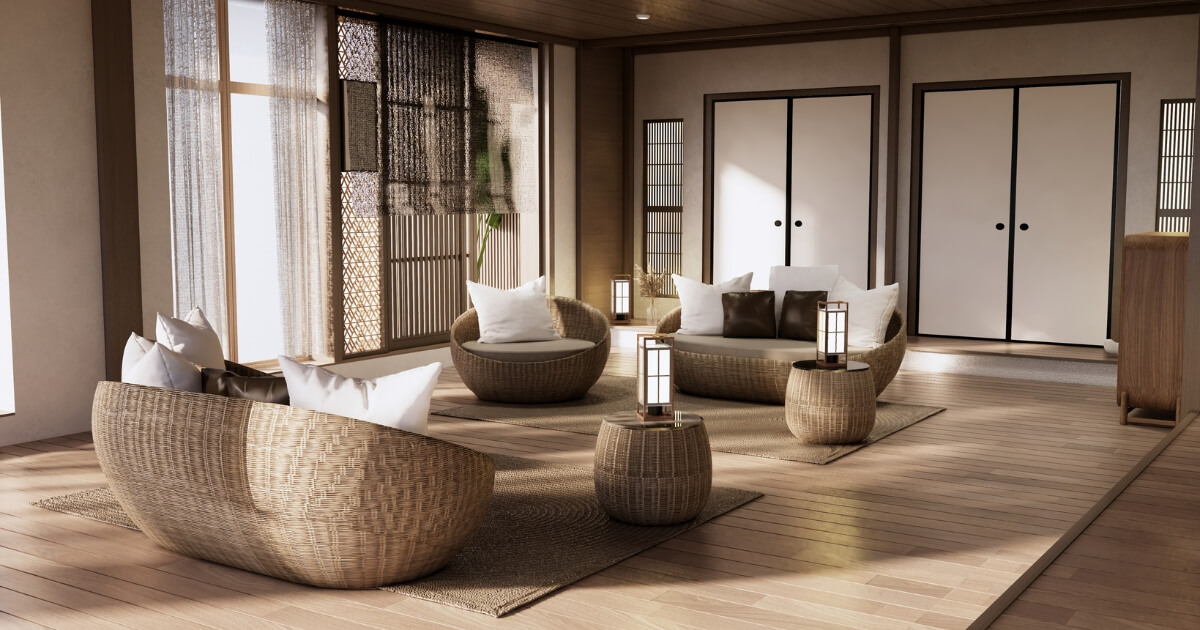
In today’s fast-paced world, I often find myself with a yearning for serene and clutter-free living spaces.
And Japandi does just that for me: fusing the simplicity and sophistication of Japanese aesthetics with the coziness and practicality of Scandinavian design.
The result is an irresistible blend that brings harmony, balance, and a sense of calm to my space.
I love the logical combination of the two design styles. A minimalist home is sparse on furniture and decor. So, every piece of furniture you own needs to work for you. And that’s where Scandinavian functionality comes in.
There’s no extra fluff, no unnecessary frills. Just sharp, clean design with all the practicality you need.
Practicality that clears your mind as much as the minimalist designs do.
And an emphasis on eco-friendly materials gives you greater peace of mind that you’re living harmoniously with the planet.
Japandi Ideas Gallery
Check out my full collection of Japandi ideas for inspiration:
Background and origins of Japandi Style
While Japandi is a relatively new term, the concepts behind it have been around for some time.
The roots of Japandi can be traced to the shared appreciation for simplicity, craftsmanship, and connection to nature found in both Japanese and Scandinavian design cultures.
Japan is known for its Zen philosophy and minimalist approach, and has inspired designers worldwide with its style of clean lines, muted colors, and elegant simplicity.
And Scandinavian design has a focus on functionality, cozy textures, and light, airy spaces – it’s been a staple in the design world for decades.
Although these two styles are unique in their own right, I think they share many common elements like the use of natural materials, a preference for neutral color palettes and warm, functional spaces.
As for the growing popularity of the Japandi look, in my opinion it can be attributed to our collective desire for a more mindful and intentional way of living, which is perfectly embodied by this elegant, functional, and sustainable design style.
Personally, I saw Japandi really hit the mainstream in 2020, during a time when we were spending a lot more time in our homes, and the world saw a surge of interest in the design style. It’s also sometimes referred to as Scandinese design.
And there’s also sub-themes of Japandi design, such as mid-Japandi, for example.
The Key Features of Japandi Design
Minimalism and simplicity
At the heart of Japandi lies a strong emphasis on minimalism and simplicity derived from Japanese culture.
I find it’s all about stripping away the unnecessary, leaving only what is truly essential.
Clean lines, uncluttered spaces, and well-curated furnishings work well – Japandi creates a soothing atmosphere that invites relaxation and tranquility.
Natural materials
Both Japanese and Scandinavian styles prioritize sustainable, eco-friendly material choices such as wood, bamboo, rattan, and stone.
I find these not only add warmth and texture to a room, but also create that connection to nature that’s key to Japanese design.#
Related: Checkout millwork in interior design for truly unique, customized and beautiful wood pieces.
Muted color palette
Japandi color palettes are all about soft, neutral shades like whites, grays, and beiges, paired with subtle pops of earthy tones like greens, blues, and browns.
I think it’s an understated approach to color, and it allows the beauty of the natural materials and design to take center stage.
Functionality and practicality
Japandi is also about being highly functional and practical.
For me that’s where the Scandinavian influence shines through in the emphasis on designing spaces for the needs of daily life.
I choose Japandi furniture for utility and comfort, with clever storage solutions keeping clutter at bay and making the most of every square inch.
Wabi-sabi and hygge
Wabi-sabi is the art of finding beauty in imperfection, and hygge is all about creating a cozy, comfortable atmosphere.
Together, I think these philosophies encourage the celebration of life’s simple pleasures and the acceptance of imperfection, adding depth and character to Japandi interiors.
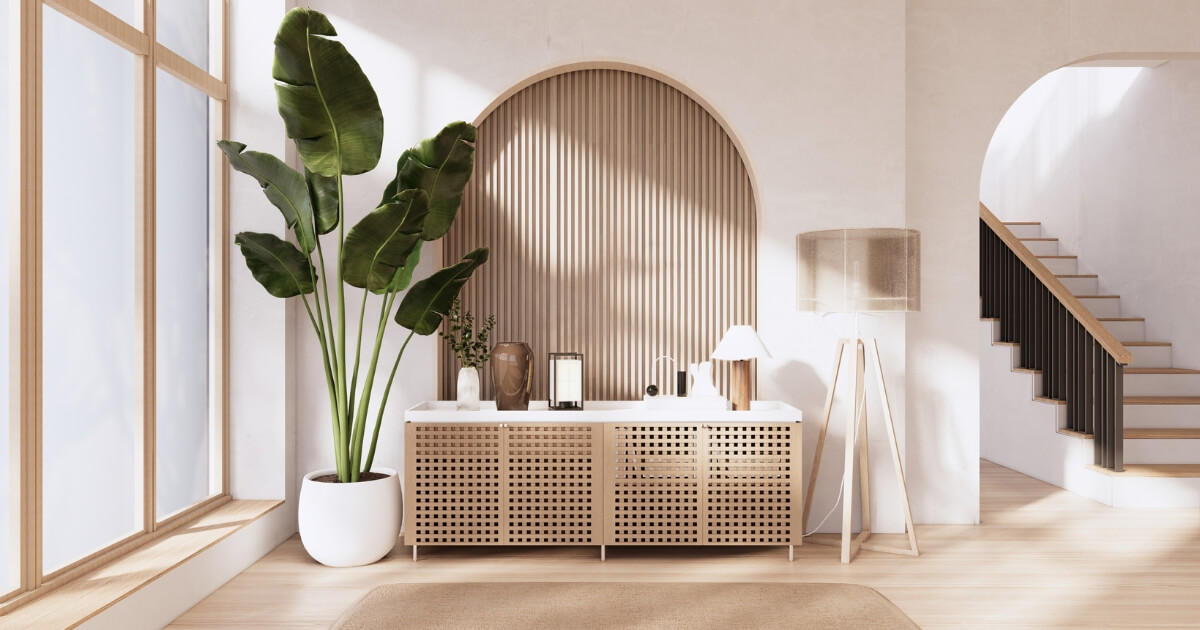
The Influence of Japanese and Scandinavian Design
Japanese Elements
Kanso
Kanso is a Japanese design principle based on simplicity and the elimination of clutter. It teaches us to create spaces free from unnecessary distractions, encouraging clarity and calm.
I think this is mainly where Japandi draws its focus on minimalism from, ensuring everything serves a purpose and contributes to a harmonious living environment.
Shibui
Shibui appreciates subtle beauty and understated elegance. It favors simple, unobtrusive forms that showcase the inherent beauty of the materials and craftsmanship.
For me. Japandi design reflects this principle particularly with its clean lines, muted colors, and the focus on the details.
Ma
Ma is the Japanese concept of negative space.
It’s supposed to encourage the mindful arrangement of furniture, decor, and open space in our homes.
I find that Japandi design uses this concept to create breathing room and emphasize the importance of the spaces in between objects, rather than just the objects themselves.
Wabi-sabi
Wabi-sabi is the Japanese art of embracing imperfections and is a cornerstone of Japandi design.
Japandi believes that life’s impermanent nature should be celebrated, and Japandi design incorporates this with handcrafted items, and pieces that show signs of wear, fostering a sense of authenticity and a ‘lived-in’, homely feeling which I love.
Scandinavian Elements
Lagom
Lagom is a Swedish concept that teaches us to find balance and harmony in all aspects of life.
In Japandi design, I find that lagom is reflected through the careful balancing of different elements, from colors and textures to the arrangement of furniture.
Striving for the perfect equilibrium, Japandi creates spaces that feel just right—neither too much nor too little, but just right.
Hygge
Hygge is the Danish art of creating a cozy atmosphere.
It’s all about embracing warmth, comfort, and contentment.
I’d say that Japandi does this mainly by using soft textiles and warm lighting, and that’s the easiest way to create this feeling.
Sustainability and eco-friendliness
I’m all about sustainable living through interior design.
Japandi spaces prioritize the use of natural, renewable materials, as well as objects and furniture that are built to last, supporting a more environmentally conscious and sustainable way of living in line with Scandinavian design principles which I love.
Functional and versatile furniture
In Japandi style, I choose furniture pieces not just for their aesthetic appeal but also their practicality and adaptability.
I love clever storage solutions, multi-purpose furniture, and well-designed layouts to make the most of every square inch and create a practical living environment to help you relax in your home.
Here’s a list of Japandi furniture pieces and links to my posts and ideas for each one:
- Japandi sideboards
- Japandi fireplaces
- Japandi barstools
- Japandi TV stands
- Japandi curtains
- Japandi desks
- Japandi bed frames
- Japandi nightstands
- Japandi chairs
- Japandi rugs
- Japandi coffee tables
- Japandi benches
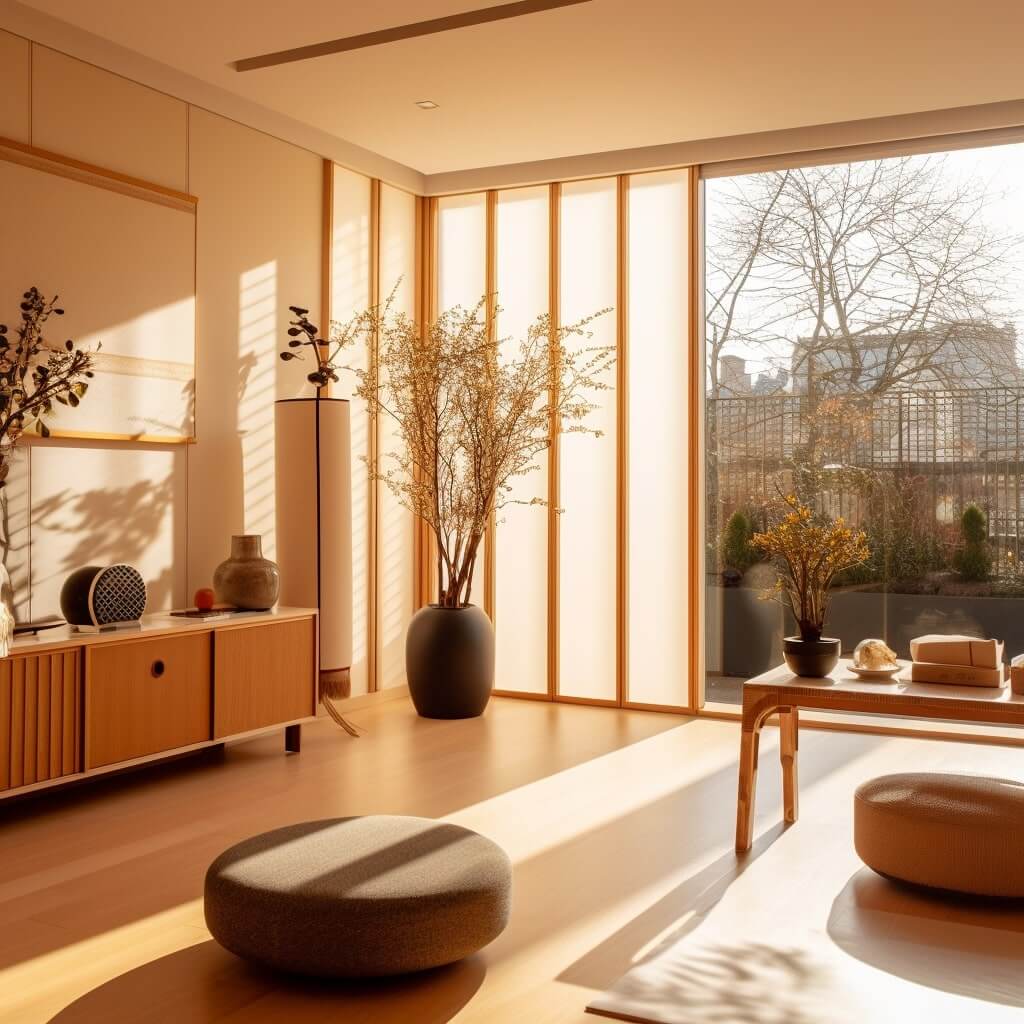
Japandi Interior Design in the Home
Japandi living rooms
In Japandi-style living rooms, I usually opt for low-profile furniture, clean lines, and a neutral color palette.
I try to create a cozy and inviting space by using soft textiles, warm lighting, and practical storage solutions. For me, this is the essence of a Japandi style home.
P.S. I also have a guide to Japandi entryways with lots of ideas, in case you want to start there instead of the living room!
Japandi bedrooms
A Japandi bedroom is a sanctuary of calm.\ I tend to choose a simplistic, low Japandi bed frame with organic bedding, and Japandi decor that fills me with relaxation and peace.
Your bedroom is the ideal room to mark your personal stamp – if you’re stuck, pick some decor and Japandi artwork that you love and that resonates with you.
Japandi kitchens
Japandi kitchens are a blend of functionality and simplicity. So, think streamlined cabinetry, open shelving, and clean, spacious countertops.
I always gravitate towards natural materials like wood and stone in all my Japandi style rooms, and I try to pair this with energy-efficient kitchen appliances to create an eco-friendly and visually appealing space (even though they can be expensive).
Japandi offices
Think minimalistic, zen workspaces for your Japandi office. A space that inspires creativity and peaceful concentration.
Japandi bathrooms & laundry rooms
For a Japandi-inspired bathroom, think spa-like serenity. I think this should be a similar vibe to your Japandi laundry room.
Again, for a Japandi interior style I use natural materials like wood, stone, and bamboo and a neutral color palette.
I focus on minimalist clean lines and shapes, and keep furniture at a minimum by ensuring that the pieces I do have are practical and space saving!
Outdoor spaces
Japandi gardens and outdoor spaces for me need to focus on the integration of nature and design.
I find a serene garden or patio has qualities of minimalist landscaping, natural materials, and a balance of plants, water features, and simple, low furniture to encourage relaxation and connection with the outdoors.
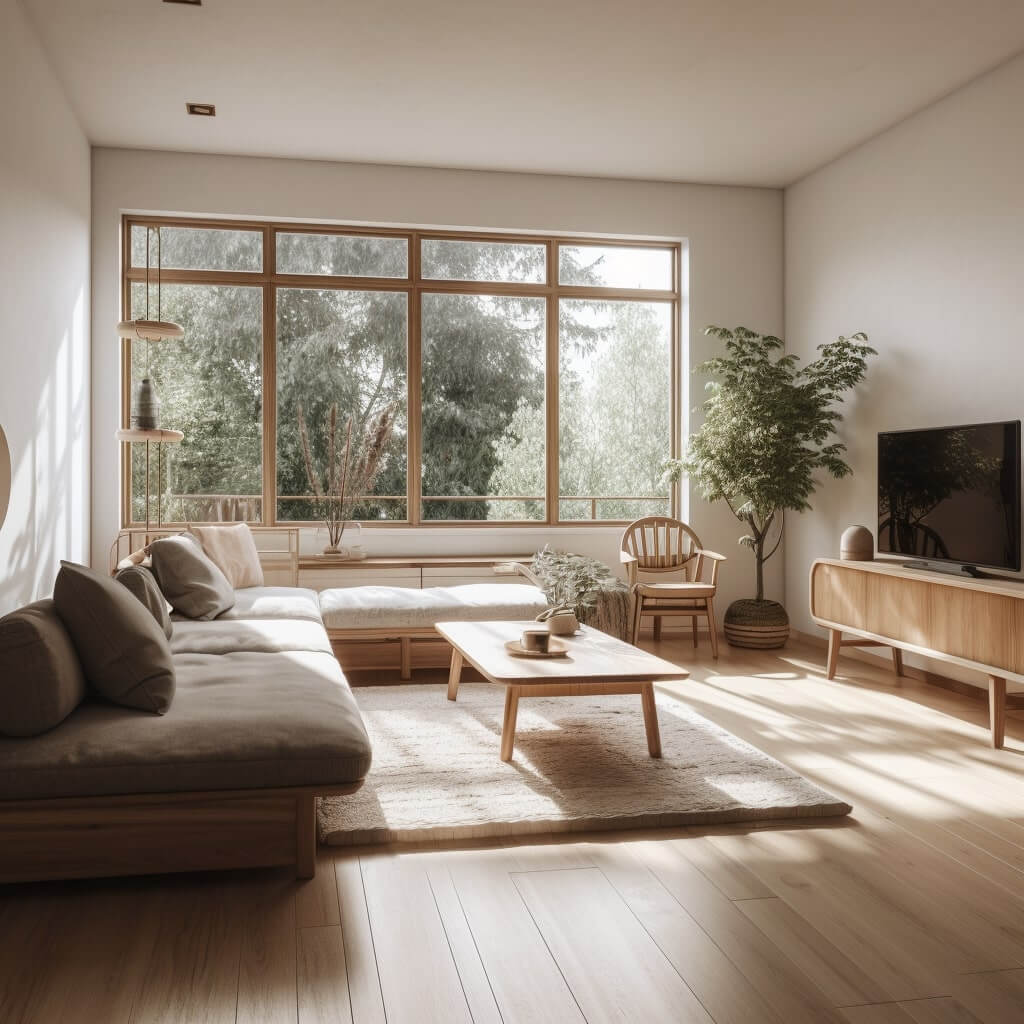
5 Tips to Create Japandi Design in Your Home
1. Japandi color palettes
For the Japandi aesthetic, I always recommend sticking to a neutral Japandi color palette with muted earth tones.
Whites, grays, and beiges can be your base colors, and then soft greens, blues, or browns bring warmth and depth.
Related: Check out my guide to picking the right colors and styles for Japandi wallpaper ideas (with plenty of ideas).
2. Combining materials and textures
Wood, bamboo, stone and rattan add warmth and texture to your home. But I also like combining contradictory textures, such as smooth stone with soft textiles, to create an interesting contrast.
If you’re lacking in a range of materials and textures, you can add some Japandi artwork to bring out these natural elements, from sculptures to fabrics and paintings.
3. Incorporating natural elements
I love bringing the outdoors inside by adding plants, natural wood crafts, and stone sculptures or furnishings to a space.
It creates a connection to nature which is a key aspect of your Japandi house style.
4. Selecting functional but stylish furniture
Consider furniture that’s both functional and aesthetically pleasing. I gravitate towards clean lines, simple forms, and things that can serve multiple purposes or adapt to different spaces – they reflect the Japandi commitments to practicality which is great. It’s also efficient and space-saving – great for small spaces like apartments and flats.
5. Creating a cozy and relaxing atmosphere
Most people tend to use soft and warm Japandi lighting styles (try to backlight certain pieces of furniture or corners of your rooms, rather than using main, overhead fixtures), plush textiles, and inviting seating arrangements.
I get inspired by hygge and wabi-sabi designed that focus on well-being and comfort for a strong, modern Japandi interior design vibe.
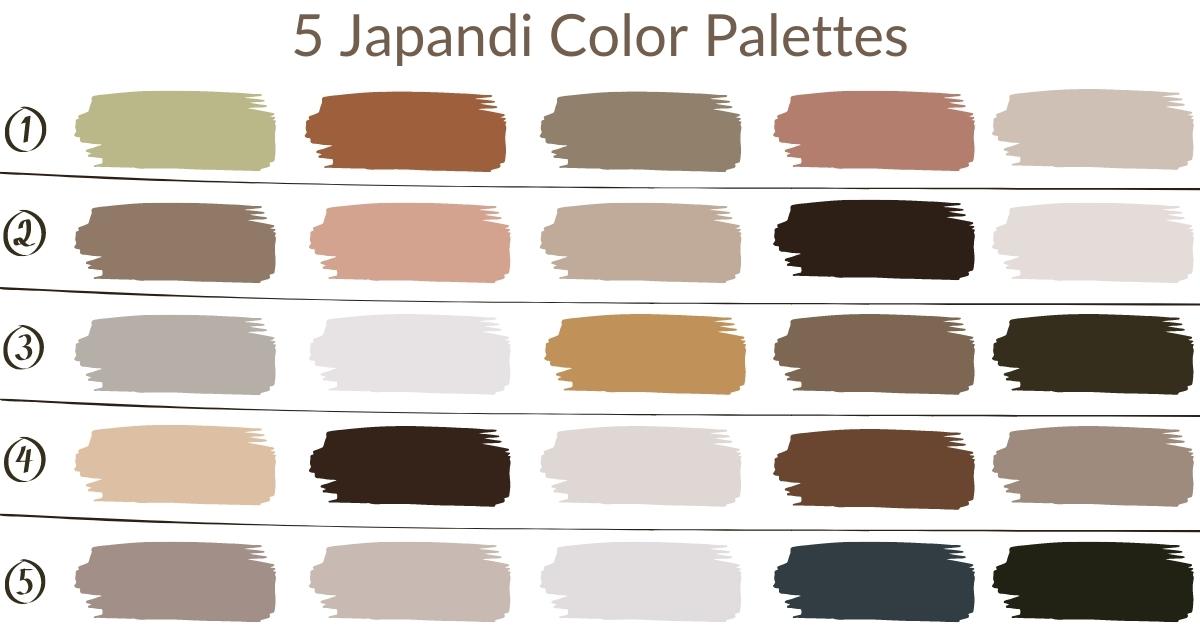
The Benefits of Japandi Design
The main general benefits of japandi design on your life at home are:
- Improved mental well-being
- Better focus and productivity
- Sustainability and eco-friendliness
- A timeless and versatile aesthetic
I think Japandi’s emphasis on simplicity and practicality can help reduce stress and promote mental well-being.
Uncluttered spaces and a soothing color palette help me truly relax at home!
Also, by eliminating those unnecessary distractions and clutter, I find Japandi design can encourage focus and productivity too. It’s an environment conducive to concentration, making it easier to get things done and keep a clear mind.
Japandi design is also inherently sustainable and eco-friendly which I love, so by embracing this design style, you’re supporting a more environmentally conscious and responsible way of living.
Finally, Japandi style interior design looks beautiful.
Its understated elegance keeps your space stylish and adaptable for years to come – always an excellent long-term investment.
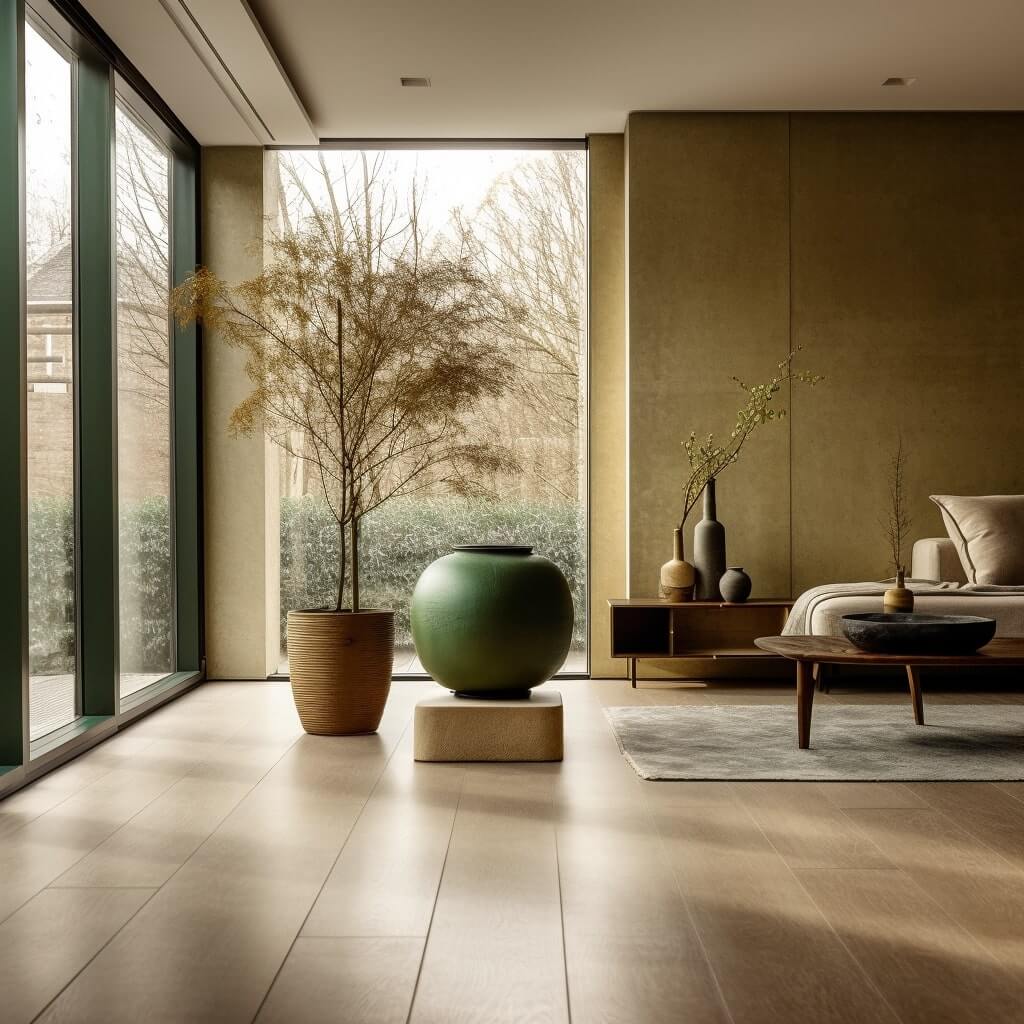
What Next?
Japandi design style is resonating with homeowners worldwide who are seeking a more mindful, sustainable, and intentional way of living.
If you’re ready to embrace a more balanced and serene living environment, I encourage you to explore and incorporate modern Japandi style in your own home.
Start by decluttering, adapt some neutral colors in your home, and pick out some functional yet stylish furniture.
Before you know it, you’ll be enjoying the myriad benefits that come with the elegant interior design Japandi creates for your home.
Note: Japandi style also works very well in combination with a retro look. I.e., Retro Japandi.
FAQs
What is the meaning of Japandi?
Japandi is a combination of the words Japanese and Scandinavian, and it represents the fusion of Japanese minimalism and Scandinavian functionality in design.
Imagine East meets West in a seamless marriage of design philosophies.
What’s the difference between wabi-sabi and Japandi?
Wabi-sabi is the Japanese art of embracing imperfection and appreciating the beauty in the natural world’s aging and decay. On the other hand, Japandi is a hybrid design style that melds Japanese minimalism with Scandinavian functionality where each element is thoughtfully curated and serves a purpose.
At first glance, they may seem similar, but wabi-sabi and Japandi are distinct approaches to design.
What are the features of Japandi?
Japandi Features 101:
The essence of Japandi lies in its sleek minimalism, warm neutral color palettes, and nature-infused elements. It also incorporates organic materials like wood, stone, and greenery.
With a focus on craftsmanship, Japandi spaces often showcase well-made, timeless pieces that are both beautiful and functional and not always perfect.
What are the rules of Japandi style?
Japandi Rules Unwrapped: Achieving Japandi style requires adhering to a few key principles:
Keep it simple with clean lines and minimal embellishments.
Stick to muted colors that evoke a sense of calm and warmth.
Use natural materials and textures to bring the outdoors in.
Prioritize balance, practicality, and comfort, ensuring that every piece in the space has a purpose and contributes to the overall aesthetic harmony.
What is the difference between Scandi and Japandi style?
Scandi vs. Japandi Showdown: Both rooted in simplicity and functionality, Scandinavian and Japandi styles share common ground.
However, Scandinavian style is known for its bright, cozy interiors with an emphasis on white spaces, natural light, and pops of color.
In contrast, Japandi takes these Scandi principles and marries them with the elegant restraint of Japanese minimalism, resulting in a unique design blend that speaks to a curated, intentional lifestyle.
What is the Japanese version of hygge?
“Wa” is the harmony-seeking principle at the heart of Japanese culture.
Much like Danish hygge, wa emphasizes coziness, contentment, and togetherness, but with a distinctive Zen twist.
This principle encourages cultivating a peaceful, balanced atmosphere in the home, where friends and family can gather, relax, and enjoy life’s simple pleasures together.
What are the three principles of wabi-sabi?
Wabi-Sabi Trifecta: Embracing wabi-sabi means appreciating three interconnected principles: the incomplete (wabi), the worn (sabi), and the transient (yugen).
Wabi is the beauty found in imperfection, while sabi is the charm of aged or weathered objects that tell a story.
Yugen highlights the fleeting, mysterious nature of life. Together, these principles teach us that imperfection is not only acceptable but can also be a source of profound beauty.
Is Japandi style expensive?
Japandi on a Budget? Absolutely! Japandi style can be cost-effective when approached thoughtfully.
Instead of splurging on high-priced items, focus on selecting quality, versatile pieces that have staying power.
Repurpose and upcycle existing items in your home to fit the Japandi aesthetic, and remember that balance and simplicity are the guiding principles—not extravagance.
With careful planning, you can create a stunning Japandi space that’s easy on the wallet.


